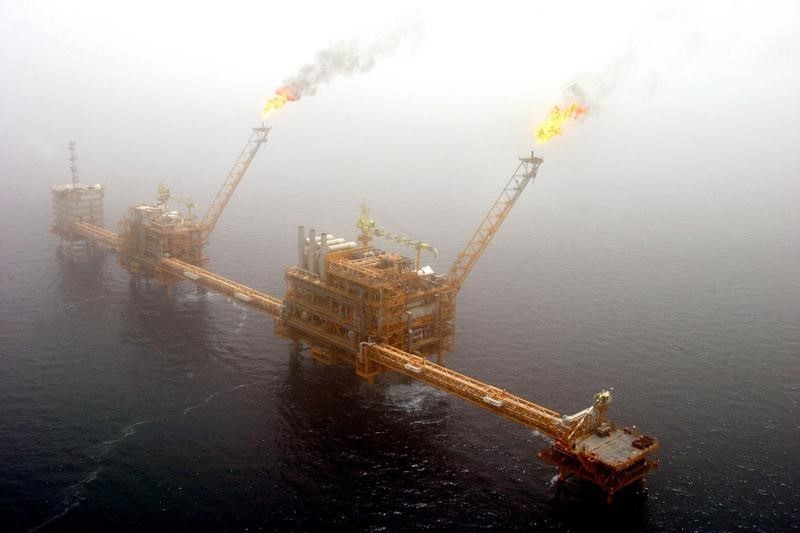Investing.com - Crude oil prices were poised to gain in Asia on Monday in the aftermath of the massive hit taken to U.S. Gulf Coast output from Hurricane Harvey and follow-on flooding inland in Texas.
The U.S. West Texas Intermediate crude October contract was last quoted up 0.10% to to $47.92 a barrel. Elsewhere, on the ICE Futures Exchange in London, Brent oil for October delivery was last quoted at $51.98 a barrel.
Hurricane Harvey has knocked offline ~22% of Gulf of Mexico oil production, or nearly 380M bbl/pay out of 1.75M, and ~26% of natural gas output, or 828M cf/day out of 3.22T, according to the U.S. Department of the Interior’s Bureau of Safety and Environmental Enforcement.
In the refining sector, most Texas Gulf Coast refining and shipping is shut or curtailed. Exxon Mobil (NYSE:NYSE:XOM) closed its Baytown refinery at the Houston Ship Channel - the second largest refinery in the U.S., with production capacity of 560K bbl/day - due to severe flooding
.
Royal Dutch Shell (LON:LON:RDSa) (RDS.A, RDS.B) says its 325K bbl/day Deer Park refinery and chemical plant complex may be shut for a week, Petrobras (NYSE:PBR) shut its 112K bbl/day Pasadena plant, and Phillips 66 (NYSE:NYSE:PSX) shut its 247K bbl/day Sweeny refinery.
All Corpus Christi refineries already were closed, so the Houston plant closures compound worries about fuel shortages that could develop as rain continues; long-term refinery outages could cause fuel shortages and sharply higher gasoline prices around the U.S.
Houston also is the starting point of the massive Colonial Pipeline that takes gasoline, diesel and jet fuel as far north as New York, but operations had not been affected as of this afternoon; Shell is one of Colonial's partners.
Last week, oil prices ended higher on Friday, as Hurricane Harvey threatened to disrupt production and refinery activity along the Gulf Coast.
Prices received additional support after an update from oilfield services firm Baker Hughes showed its weekly count of oil rigs operating in the U.S. fell for the second time in row, by four rigs to a total of 759.
The weekly rig count is an important barometer for the drilling industry and serves as a proxy for oil production and oil services demand.
